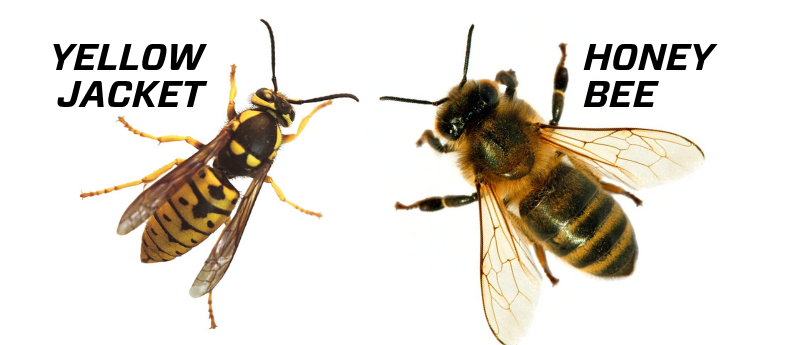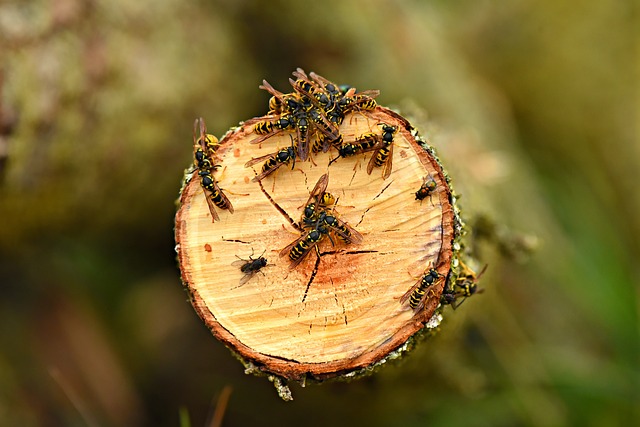By David Wall, Mount Pleasant Master Gardener
I don’t know about you, but for my money, a yellow jacket (YJ) sting hurts more than any other wasp or bee. Worse, they often sting in force. Regrettably, I have often stuck my hand in a cucumber plant cage and got hit 4-5 times before I could get my hand back out. Honeybees and bumblebees are usually only defensively aggressive, but at this time of year, YJs are extremely aggressive and are more than willing to give chase.

When a yellow jacket (YJ) stings, the official guidance is to never, swat, slap, or run away. This is advice that I have NEVER been able to follow! Doing these things can supposedly increase the attack force. Maybe so, but I’ve never stuck around long enough to find out!
We’ve all seen YJ nests under house eaves, but most nests are underground, usually at the base of a tree. Before entering USAF, I had a crew of Idabel, Oklahoma high school and college workers injecting no-value hardwoods to allow pines to grow. One student (only one) invariably was injecting a tree with a YJ nest at its base. He got stung several times with every time being in the navel! OUCH!
Wasps, including YJs, are excellent predators of insect pests, and this saves farmers (and gardeners) a lot of money. They are also valuable pollinators for several garden plants. Being so valuable, when I approach an okra, tomato, pepper or other vegetable plant, I don’t mind waiting for the YJ to finish its business and move on to another plant!
As fall starts, an abundance of prey insects and overripe fruit lessen, and YJs move to other areas searching for replacements, particularly at picnics, barbeques, and trash cans. Then, when winter hits all die except newly mated queens who burrow and hibernate.







